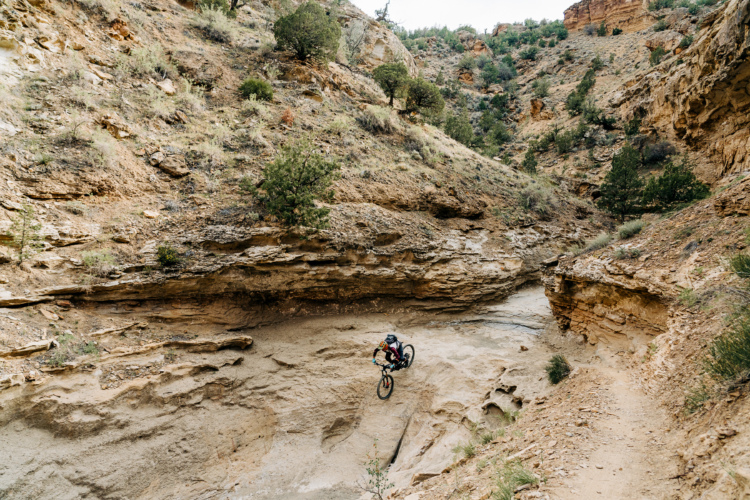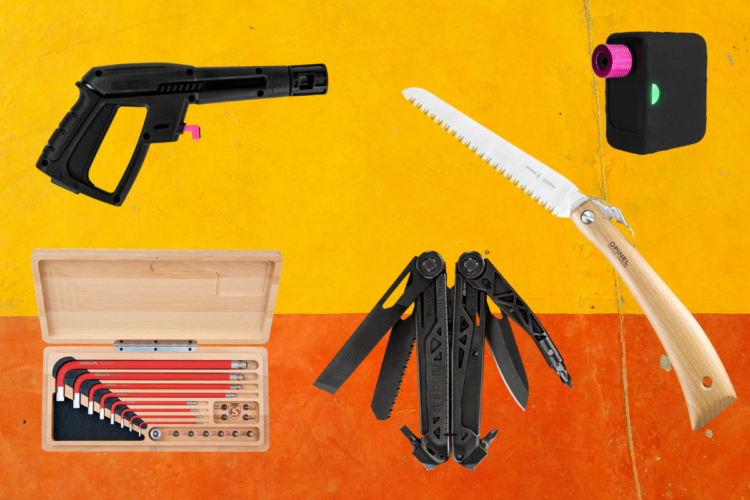
The Stoke is an occasional opinion series highlighting the things that get us stoked about mountain biking. 🤘 👍 👏 🙏
Here on The Stoke my goal is to keep things positive. I ride mountain bikes because they’re fun, and definitely not because I need another thing in my life to complain about. Like those tear-to-open, supposedly resealable shredded cheese bags from the grocery store. Seriously, don’t get me started on how those never work the way they should.
In mountain biking, as in life, it can be helpful to look on the bright side of things. Take new standards, for example. I’m pretty sure if you ask any bike owner what they think of “new standards,” they’ll give you a look like they just witnessed someone riding a muddy trail that’s closed. It’s a look that combines both indignation and shock that anyone could cluelessly ask such a dumb question. New bike standards suck, of course!
Over the years we have become understandably skeptical and even upset whenever a new standard appears. But for starters I think it’s important to define what a standard is not. Creating a new bike part that’s only compatible with your bike is not a standard. That’s proprietary. Marketing departments sometimes do get ahead of themselves, proclaiming a fresh piece of gear or a novel way of doing things is the new standard. I like to remind myself that saying so rarely makes it so.
A true standard, by contrast, is something that more than one company has agreed is the better way forward. As painful as the transition to Boost spacing was for mountain bikers, pretty much every frame builder, fork maker, and wheel manufacturer got on board in a relatively short period of time. Of course it helps if the standard maker is a mildly benevolent 800lb gorilla. I use the word benevolent because as far as I know SRAM doesn’t charge frame builders a licensing fee to use the word Boost in their product specs (capitalization and all) or take a cut from wheel makers whose hubs are 148mm wide. Even if SRAM does charge a fee, it obviously hasn’t been enough to prevent the standard from becoming widely adopted. Even Super Boost is being used by several brands, presumably because it solves a problem or allows them to do something cool. Most of us can agree that today’s wheels and drivetrains, along with mountain bike geometry in general, are better than ever, thanks at least in some small part to these new standards.
In most industries there are working groups and organizations that exist to help create and codify standards. Even ISO, the International Organization for Standardization, has things to say about bike tire and rim sizes (ETRTO does too). I’m stoked that I can buy a 29er tire from Maxxis, Continental, or Vee and know that it will fit on my rims, whether they’re Reynolds, Enve, or Stans.
It’s tempting to think we might be better off with a coalition of brands and industry professionals working to keep things standardized and to prevent brands from inventing new standards on their own. A lot of our readers are in the tech industry, and likely familiar with the World Wide Web Consortium (W3C), the main international group that sets software standards for the internet. In 2004 the group began laying out the standards for HTML5 which was to power the next generation of web applications. A decade later, in 2014 — eons in internet time — the HTML5 standard was officially recommended. Fortunately in the meantime popular web browsers like Chrome and Firefox had been incorporating many of the latest technologies on their own, creating new standards along the way. Any web developer during this time can tell you that things got a little messy and there were growing pains, but ultimately we got cool stuff like smartphones. And TikTok.
If the alternative to constantly new and evolving standards in the bike world is slow-moving, rarely changing ones that prevent the next great thing from getting here sooner, I’ll take the former every time. Bring it on. In fact I’ve said exactly the same thing in the past.
I sometimes laugh at myself when I realize how quickly I can go from being stoked to being bummed by something like a new bike coming out. All of the fun times I had and will continue to have with my fancy wheels can evaporate in an instant because there’s a newer version that’s a different size. Or a new color. The flip side to being stoked is being bummed, and I can’t deny that new standards can feel like a bummer at first. The thing is, that feeling is on me, not on the riders and tinkerers who question existing standards and are genuinely trying to make bikes better. It sorta reminds me of how type-2 fun is only fun in hindsight.
At this point in my Stoke I probably sound like Newman lying to convince Jerry that he loves the taste of broccoli. (Vile weed!) Truthfully as mountain bikers there have been plenty of times when we were presented with a bag of reheated, soggy bike standards, to which we’ve said, “no thanks.” Just look at wheel sizes in the 2010s. 29er adoption wasn’t about standards per se, but it felt an awful lot like many of us were being forced into a wheel size we didn’t want or need. De facto standards, while not rigid, nonetheless feel like standards imposed by the others. I guess I’m not stoked or bummed about de facto standards; more like chill, I suppose. Attempting to slow or prevent them is really just shouting at the wind. The upshot of the wheel size shift is that even today, more than a decade after 29er mania hit, you can still buy good 26in tires for your — by now certainly vintage — mountain bike.
So start speccing 34.9mm diameter seat tubes if that means we can have more dropper post travel with our bikes. Give me that Universal Derailleur Hanger so I don’t have to spend hours scouring the internet to find the right one for my British hardtail and then wait weeks for a $90 sliver of brittle aluminum to arrive.
I’ll be the first to admit that being stoked is sometimes just another word for living blissfully unaware. Some might even call it being naive, and that’s fine too. I barely have a clue about how mountain bike suspension works, and yet I fully enjoy riding fast down chunky trails and boosting off lips.
On the trail, and faced with new standards, I’m just stoked that someone else is thinking about these things so I can enjoy the ride.





















14 Comments
Sep 16, 2022
Sep 23, 2022
Sep 17, 2022
Sep 18, 2022
Sep 19, 2022
Sep 21, 2022
83mm BB and 157mm rear end makes my Sarge a drama free experience since i64 rims shod with 4.0 Van Helgas are not interefered with by a chainline that cannot properly function.
Sep 19, 2022
What's the answer? Should standards be established and to what end? Personally I don't think we need performance standards such as hub spacing. They can stay as unwritten 'agreements' between manufacturers.
Sep 21, 2022
ISO, kinda similar to IEEE in electronics...
How long it took for 1080p to be ratified by IEEE, was a snail's pace. I can see some of bicycle standardization needing this seeing as how hub/axle sizes are in 1mm increments now! Surly, I jest, but only to a minimal extent...
Sep 16, 2022
I had to finally put my trusted 26" out to pasture because it was getting too difficult to replace worn/damaged parts. Given how much a good bike costs these days, I do have a fear that I won't be able to nurse an older bike through to retirement like I could in the past.
Sep 22, 2022
Sep 22, 2022
Sep 22, 2022
Probably didn't need to read all 9 paragraphs anyway since "the point" is in the title.
Sep 23, 2022
Sep 17, 2022